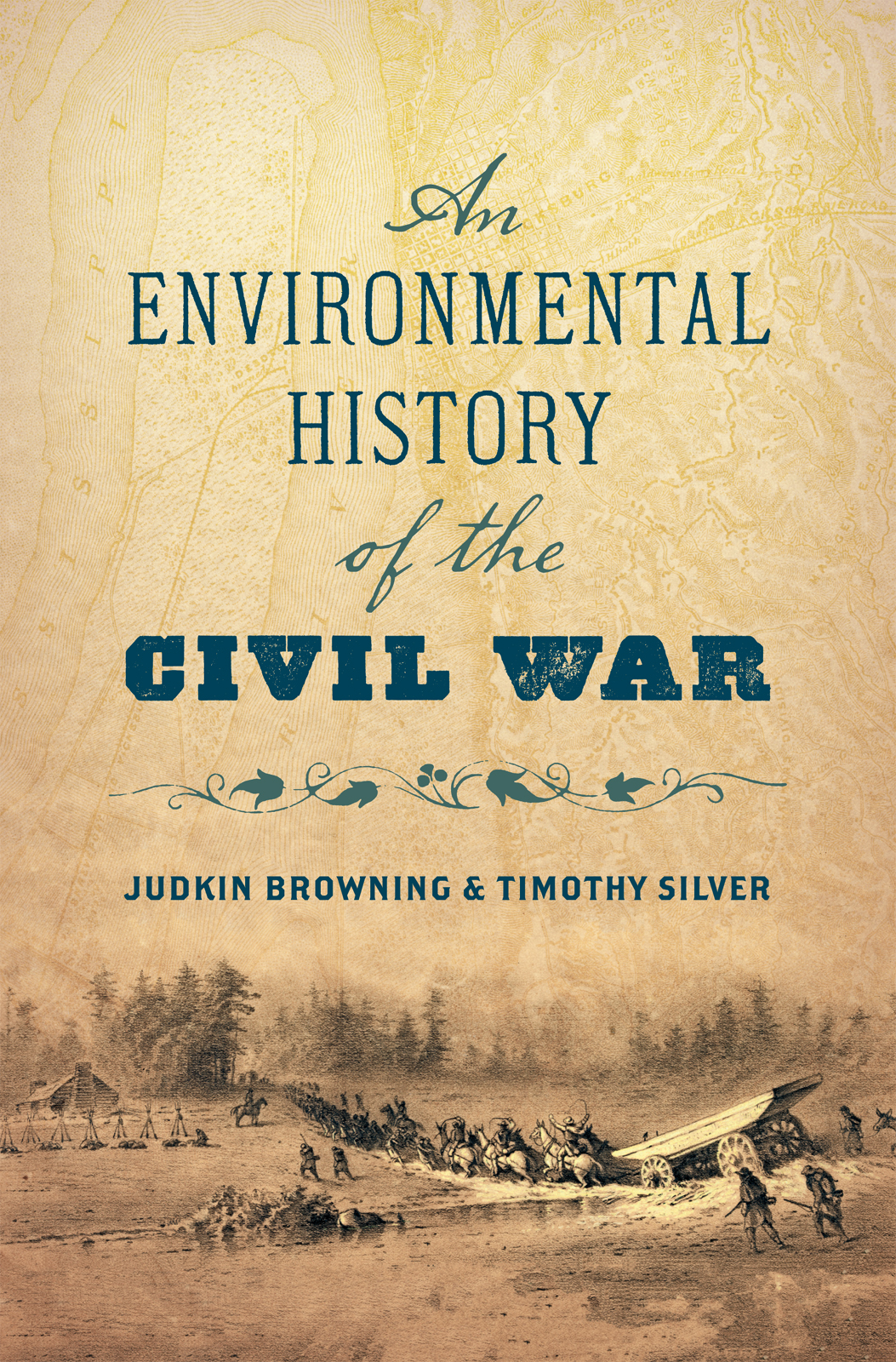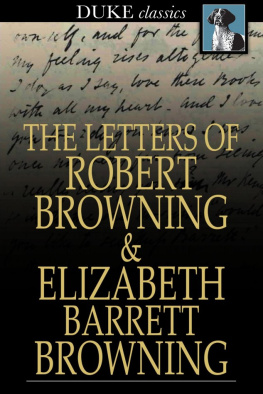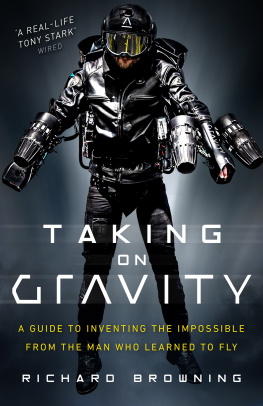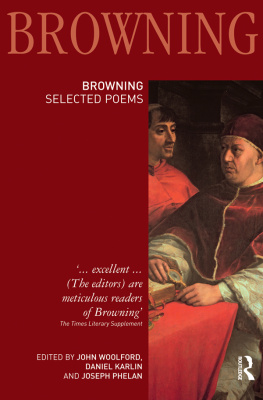Judkin Browning - An Environmental History of the Civil War
Here you can read online Judkin Browning - An Environmental History of the Civil War full text of the book (entire story) in english for free. Download pdf and epub, get meaning, cover and reviews about this ebook. year: 2020, publisher: The University of North Carolina Press, genre: History. Description of the work, (preface) as well as reviews are available. Best literature library LitArk.com created for fans of good reading and offers a wide selection of genres:
Romance novel
Science fiction
Adventure
Detective
Science
History
Home and family
Prose
Art
Politics
Computer
Non-fiction
Religion
Business
Children
Humor
Choose a favorite category and find really read worthwhile books. Enjoy immersion in the world of imagination, feel the emotions of the characters or learn something new for yourself, make an fascinating discovery.

- Book:An Environmental History of the Civil War
- Author:
- Publisher:The University of North Carolina Press
- Genre:
- Year:2020
- Rating:4 / 5
- Favourites:Add to favourites
- Your mark:
- 80
- 1
- 2
- 3
- 4
- 5
An Environmental History of the Civil War: summary, description and annotation
We offer to read an annotation, description, summary or preface (depends on what the author of the book "An Environmental History of the Civil War" wrote himself). If you haven't found the necessary information about the book — write in the comments, we will try to find it.
An Environmental History of the Civil War — read online for free the complete book (whole text) full work
Below is the text of the book, divided by pages. System saving the place of the last page read, allows you to conveniently read the book "An Environmental History of the Civil War" online for free, without having to search again every time where you left off. Put a bookmark, and you can go to the page where you finished reading at any time.
Font size:
Interval:
Bookmark:

An ENVIRONMENTAL HISTORY of theCIVIL WAR
CIVIL WAR AMERICA
Peter S. Carmichael, Caroline E. Janney, and Aaron Sheehan-Dean, editors
This landmark series interprets broadly the history and culture of the Civil War era through the long nineteenth century and beyond. Drawing on diverse approaches and methods, the series publishes historical works that explore all aspects of the war, biographies of leading commanders, and tactical and campaign studies, along with select editions of primary sources. Together, these books shed new light on an era that remains central to our understanding of American and world history.


JUDKIN BROWNING & TIMOTHY SILVER
THE UNIVERSITY OF NORTH CAROLINA PRESS
Chapel Hill
2020 The University of North Carolina Press
All rights reserved
Designed by Jamison Cockerham
Set in Arno, Scala Sans, Rudyard, Ashwood, Brothers, and Dear Sarah by Tseng Information Systems, Inc.
Cover illustrations: Map of the siege of Vicksburg, 1864, by Adam Badeau, 1885; and Stuck in the Mud: A Flank March across Country during a Thunder Shower, by Edwin Forbes, ca. 1876; both courtesy of the Library of Congress.
Manufactured in the United States of America
The University of North Carolina Press has been a member of the Green Press Initiative since 2003.
LIBRARY OF CONGRESS CATALOGING-IN-PUBLICATION DATA
Names: Browning, Judkin, author. | Silver, Timothy, 1955 author.
Title: An Environmental History of the Civil War / Judkin Browning and Timothy Silver.
Other titles: Civil War America (Series)
Description: Chapel Hill : The University of North Carolina Press, [2020] |
Series: Civil War America | Includes bibliographical references and index.
Identifiers: LCCN 2019041157 | ISBN 9781469655383 (cloth) | ISBN 9781469655390 (ebook)
Subjects: LCSH: NatureEffect of human beings onUnited States
History19th century. | United StatesHistoryCivil War, 18611865. | United StatesEnvironmental conditionsHistory19th century.
Classification: LCC E468.9 .B883 2020 | DDC 973.7dc23
LC record available at https://lccn.loc.gov/2019041157
oneSICKNESS
SpringWinter 1861
twoWEATHER
Winter 1861Fall 1862
threeFOOD
Fall 1862Summer 1863
fourANIMALS
Summer 1863Spring 1864
fiveDEATH AND DISABILITY
Spring 1864Fall 1864
sixTERRAIN
Fall 1864Spring 1865
An ENVIRONMENTAL HISTORY of theCIVIL WAR

The day after Christmas 1862, Union general Ambrose Burnside started planning a bold maneuver to capture the Confederate capital of Richmond. The commander called for his Army of the Potomac to cross Virginias Rappahannock River on pontoon bridges west of Fredericksburga city halfway between Washington, D.C., and Richmondand move south around the Confederate troops on the other side. From that position, Burnside hoped to squeeze the enemy between his army and the banks of the Rappahannock. With southern forces defeated or on the defensive, Burnside believed he might have an easy path to Richmond. Once there, he would deal the South a blow from which it could not recover. Such an aggressive move might also boost northern morale, which had been at low ebb since a humiliating defeat at Fredericksburg two weeks earlier. Few subordinate officers expressed much faith in Burnside or his plan. At least two generals met with President Abraham Lincoln to say as much, and for a moment, the commander in chief wavered. But when Burnside threatened to resign, Lincoln reluctantly approved the action.
During the first weeks of 1863, Burnside watched the weather. Sunny skies and cool temperatures allowed local roads to dry out and become firm enough for travel. Even a quick cold snap on January 17 seemed to have little effect on his men or his projected path to the Rappahannock. Encouraged by the good weather, the general put his army in motion at noon on January 20. As he approached the river, however, Burnside got word of Rebel troops stationed south of the river in a position he had not anticipated. He decided to delay the crossing for a day while he considered the latest intelligence. After that, he intended to move his two corpsBurnside preferred to call them Grand Divisionsconsisting of 75,000 men into position for an attack on Robert E. Lees Confederate forces.
Around 9:00 on the night of January 20, just as the first of his men reached the rivers edge, a cold, heavy, incessant rain set in along the Rappahannock. At times the rain mixed with snow, and the precipitation did not stop for thirty hours. Driving wind blew down hastily pitched tents. The relentless downpour doused campfires, leaving shivering soldiers no protection against the elements. Gen. Rgis de Trobriand recalled that nightfall brought a funereal aspect, in which the enthusiasm is extinguished. In short order, the once-firm Virginia roads became a muddy morass of ruts and ditches as impassable as any swamp. Trobriand asserted, the mud is not simply on the surface, but penetrates the ground to a great depth. According to one of Burnsides artillery officers, The mud was so deep that sixteen horses could not pull one gun. Wagons stuck up to their hubs, draft animals died from exhaustion, and mules drowned in the middle of the road. At least four of the pontoon bridges needed to cross the river remained mired firmly in the muck. Theodore A. Dodge, a soldier in the 110th New York who followed Burnside to the river, explained it this way: Mud is really king. He sets down his foot and says, Ye shall not pass, and lo and behold we cannot.
Something about the Virginia quagmire proved especially insidious. Dodge could not put his finger on it, but for some reason, he believed, mud wields a more despotic sway these last two days than I ever saw him wield before. Unable to go any farther, Burnsides bedraggled men forlornly returned to their winter camps near Fredericksburg without so much as firing a shot. Meanwhile, on the other side of the river, Lees men looked on with glee, posting large signs that read This Way to Richmond (complete with arrows pointing in the opposite direction from the capital city) and Burnside Stuck in the Mud.
In the aftermath of the fiasco, Burnside blamed insubordinate Union officers for his woes and threatened to resign unless Lincoln dismissed the alleged offenders. The officers and their supporters, some of whom coveted Burnsides command, pointed the finger at the general. Eventually Lincoln, never enamored with Burnsides effort in the first place, convinced the general to accept another assignment and entrusted the Army of the Potomac to Joseph Hooker, one of Burnsides critics. Perhaps better than any other incident, Burnsides ill-advised Mud March demonstrates the indecision, lack of leadership, and internal rancor that plagued the Union high command in late 1862 and early 1863.
Font size:
Interval:
Bookmark:
Similar books «An Environmental History of the Civil War»
Look at similar books to An Environmental History of the Civil War. We have selected literature similar in name and meaning in the hope of providing readers with more options to find new, interesting, not yet read works.
Discussion, reviews of the book An Environmental History of the Civil War and just readers' own opinions. Leave your comments, write what you think about the work, its meaning or the main characters. Specify what exactly you liked and what you didn't like, and why you think so.









